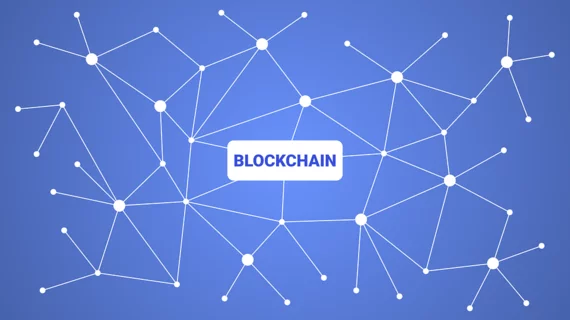If healthcare learns to share, blockchain could transform radiology
Imagine a patient calls an ambulance for chest pain and, on the way to the hospital, EMTs send their entire health record and vitals to the emergency department. When the patient arrives, clinicians have already reviewed their information. Such a world could dramatically improve care.
In Estonia, a small country in northern Europe, this is a reality, so explained Woojin Kim, MD, CMIO of Nuance Communications, during a presentations at last week’s Society for Imaging Informatics in Medicine (SIIM) annual conference.
“Every patient, every person in that country has their medical record up in the cloud, and that scenario I just described actually exists, they’ve (Estonia) had this for years,” Kim said. “This really (shows) its (blockchain) more than just a pipe dream.”
Blockchain technology was described in a recent study published in the SIIM-run Journal of Digital Imaging as “a distributed transaction database in which interconnected computers—nodes of a peer-to-peer network—cooperate as a system to store a growing list of records encrypted as a single unit, or block, and then chained together. Blocks consist of data containing the details of transactions between users. A transaction is basically a string of data and it can contain any kind of information.”
Kim, formerly chief of Radiography Modality at the University of Pennsylvania, argued that blockchain will require a paradigm shift in which records and images travel with the patient instead of staying siloed in hospitals.
Wherever the patient goes, he said, they will own their records and give institutions access to their data. When implemented properly, blockchain could have tremendous benefits for patients and clinicians alike.
For example, a patient could quickly share if they had contrast allergies or metal in their body with a radiologists by clicking a button, Kim explained.
And instead of uploading images to a CD, patients could agree to a “smart contract” through blockchain and share their entire scan history with an institution, department or single radiologist.
Blockchain could also be used to speed up claims approvals and streamline preauthorization, Kim said. Such technology could track and store maintenance records as well as the inspection history of valuable imaging equipment.
Kim, along with a few other presenters during the session, suggested blockchain could ease the medical credentialing process—a nauseating task for most clinicians and costly process for most hospitals.
In fact, he cited a statistic which found hospitals lose about $7,000 per day for each day a particular position is not credentialed.
“If you look at those forms, they’re asking the same questions. Why couldn’t all that record be stored on blockchain?” Kim questioned. “I had to go to every single state board and figure out where I could have my licenses. Instead of taking literally month to get credentialed at a hospital I can get credentialed in a matter of seconds,” he said.
Of course, as with any big change, there are some major roadblocks to overcome.
Those include, among others, regulatory challenges presented by HIPPA; threat of a blockchain getting hacked; issues of transparency; and what Kim described as business issues.
“We are a field where we tend to be at the forefront of technology in medicine in general, but even in radiology one thing is that if we don’t have a successful implementation of blockchain it is going to slow down adoption and we won’t get to the example of what we saw in Estonia,” he said.
And perhaps the biggest leap healthcare as a whole will need to overcome is its willingness to share data, Kim argued.
“Reality is, if we (healthcare) don’t want to share our data it doesn’t matter what kind of technology we have it’s going to block a technology like blockchain from sharing data.”
Kim did not cite any relevant discolsures during his presentation at SIIM.

